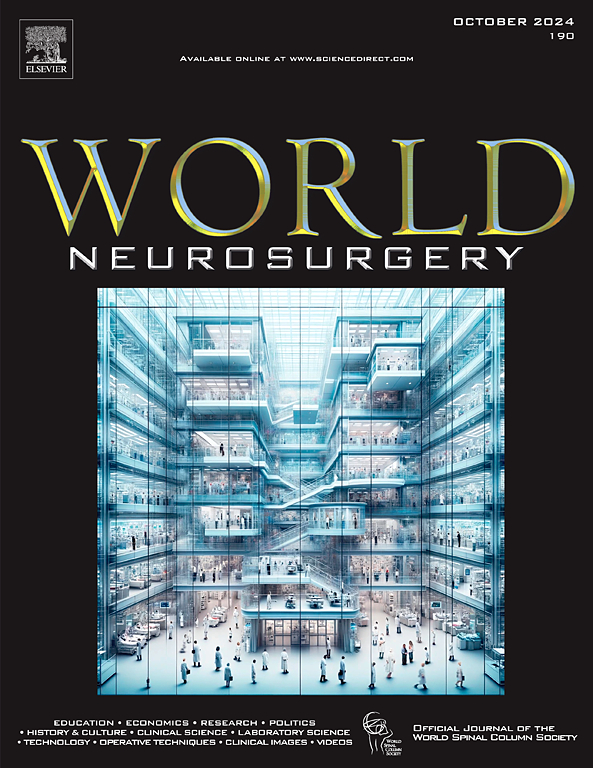Genetically Proxied Antiplatelet Drug Target Perturbation and Risk of Aneurysmal Subarachnoid Hemorrhage: A Mendelian Randomization Analysis
IF 1.9
4区 医学
Q3 CLINICAL NEUROLOGY
引用次数: 0
Abstract
Background
The impact of antiplatelet drugs (APDs) on the rupture risk of unruptured intracranial aneurysms (uIAs) remains controversial. This study aimed to evaluate the causal effects of APDs on aneurysmal subarachnoid hemorrhage (aSAH) and uIA.
Methods
A two-sample Mendelian randomization (TSMR) analysis examined associations between genetically proxied platelet reactivity and aSAH. The therapeutic inhibition of platelet aggregation by 5 widely used APDs was proxied by expression quantitative trait loci from eqtlGen consortium and Genotype-Tissue Expression project v8 consortium and protein quantitative trait loci from deCODE database. Causal effects were estimated with summary-data-based MR, TSMR, colocalization analysis, and sensitivity analysis. Mediation MR analysis explored potential pathways.
Results
The platelet reactivity was inversely associated with the risk of aSAH, exhibiting no discernible heterogeneity or pleiotropic effects (odds ratio, 0.883; 95% confidential interval, 0.833–0.936; P = 2.67E-05). No causal effects on the aSAH and uIA were observed for the majority of APD target genes by summary-data-based MR, TSMR, and colocalization analysis. However, elevated genetic expression of platelet endothelial aggregation receptor 1 was associated with increased platelet reactivity with an odds ratio of 1.46 (β1 = 0.375, se=0.072; P = 1.99E-07), and this elevation showed significant inverse association with aSAH risks (β2 = −0.125, se=0.030; P = 2.67E-05).
Conclusions
The platelet reactivity was inversely associated with aSAH risk. However, APDs were not identified as either risk or protective agents for aSAH or uIA. Targeting platelet endothelial aggregation receptor 1 might reduce platelet reactivity and increase aSAH risk, highlighting the need for further research.
遗传代理抗血小板药物靶点扰动与动脉瘤性蛛网膜下腔出血的风险:孟德尔随机分析。
背景:抗血小板药物(APDs)对未破裂颅内动脉瘤(uIAs)破裂风险的影响仍存在争议。本研究旨在评价APDs对动脉瘤性蛛网膜下腔出血(aSAH)和uIA的因果关系。方法:采用双样本孟德尔随机化(TSMR)分析,研究基因介导的血小板反应性与aSAH之间的关系。通过来自eqtlGen联盟和GTEx v8联盟的表达数量性状位点(eQTL)和来自deCODE数据库的蛋白质数量性状位点(pQTL),验证了5种广泛使用的apd对血小板聚集的治疗性抑制作用。通过基于汇总数据的孟德尔随机化(SMR)、TSMR、共定位分析和敏感性分析来估计因果效应。调解MR分析探索潜在途径。结果:血小板反应性与aSAH的风险呈负相关,没有明显的异质性或多效效应(优势比[or], 0.883, 95%可信区间,0.833-0.936;p = 2.67 e-05)。通过SMR、TSMR和共定位分析,大多数抗血小板药物靶基因对aSAH和uIA没有因果影响。然而,PEAR1基因表达升高与血小板反应性增加相关,OR为1.46 (β1=0.375, se=0.072;p=1.99E-07),且该高度与aSAH风险呈显著负相关(β2=-0.125, se=0.030;p = 2.67 e-05)。结论:血小板反应性与aSAH风险呈负相关。然而,apd并未被确定为aSAH或uIA的风险因子或保护性因子。以PEAR1为靶点可能降低血小板反应性,增加aSAH风险,需要进一步研究。
本文章由计算机程序翻译,如有差异,请以英文原文为准。
求助全文
约1分钟内获得全文
求助全文
来源期刊

World neurosurgery
CLINICAL NEUROLOGY-SURGERY
CiteScore
3.90
自引率
15.00%
发文量
1765
审稿时长
47 days
期刊介绍:
World Neurosurgery has an open access mirror journal World Neurosurgery: X, sharing the same aims and scope, editorial team, submission system and rigorous peer review.
The journal''s mission is to:
-To provide a first-class international forum and a 2-way conduit for dialogue that is relevant to neurosurgeons and providers who care for neurosurgery patients. The categories of the exchanged information include clinical and basic science, as well as global information that provide social, political, educational, economic, cultural or societal insights and knowledge that are of significance and relevance to worldwide neurosurgery patient care.
-To act as a primary intellectual catalyst for the stimulation of creativity, the creation of new knowledge, and the enhancement of quality neurosurgical care worldwide.
-To provide a forum for communication that enriches the lives of all neurosurgeons and their colleagues; and, in so doing, enriches the lives of their patients.
Topics to be addressed in World Neurosurgery include: EDUCATION, ECONOMICS, RESEARCH, POLITICS, HISTORY, CULTURE, CLINICAL SCIENCE, LABORATORY SCIENCE, TECHNOLOGY, OPERATIVE TECHNIQUES, CLINICAL IMAGES, VIDEOS
 求助内容:
求助内容: 应助结果提醒方式:
应助结果提醒方式:


